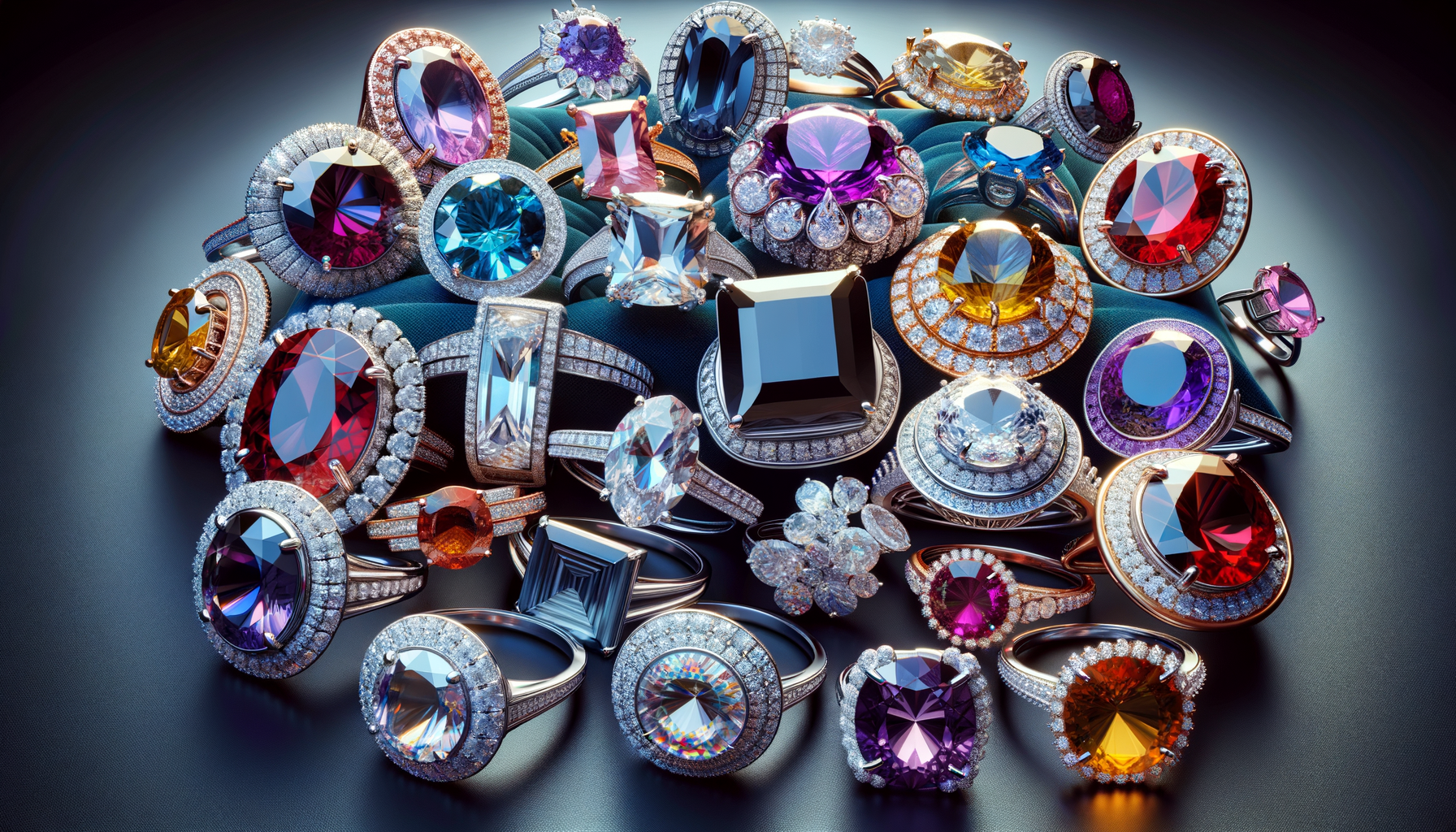
Unraveling the Charm of Birthstone Rings
The Historical Significance of Birthstones
Birthstones have been cherished for centuries, with their origins tracing back to ancient civilizations. The concept of birthstones is believed to have begun with the Breastplate of Aaron, a religious garment described in the Bible, which was adorned with twelve gemstones representing the twelve tribes of Israel. This connection to spirituality and divine protection has imbued birthstones with a sense of mysticism and reverence.
Throughout history, different cultures have assigned various meanings and powers to gemstones. For instance, the ancient Egyptians believed that gemstones had protective qualities, while the Greeks associated them with their gods and goddesses. In the Middle Ages, people wore birthstones as talismans to ward off evil and bring good luck. The enduring appeal of birthstones is rooted in these historical beliefs, which continue to influence how we perceive and value these gems today.
Birthstones also play a significant role in modern traditions. Many people wear birthstone jewelry to celebrate personal milestones, such as birthdays and anniversaries. The symbolism associated with each stone adds a layer of personal significance, making birthstone rings a popular choice for gifts. The historical and cultural significance of birthstones ensures their continued popularity in the world of jewelry.
The Personal Connection and Customization
One of the most compelling aspects of birthstone rings is their ability to forge a personal connection between the wearer and the jewelry. Each birthstone is associated with a specific month, offering a unique way for individuals to express their identity and celebrate their birth month. This personal connection is often enhanced by the perceived properties and meanings attributed to each stone.
For example, garnet, the birthstone for January, is believed to symbolize protection and strength, while amethyst, associated with February, is thought to promote clarity and peace. These meanings provide an additional layer of personalization, allowing individuals to choose stones that resonate with their personal beliefs and aspirations.
Customization options further enhance the appeal of birthstone rings. Many jewelers offer a range of designs, allowing customers to select the metal, setting, and style that best suits their taste. This flexibility ensures that each birthstone ring is as unique as the person who wears it. The ability to customize these rings makes them a cherished possession, often passed down through generations as a family heirloom.
Birthstones and Their Aesthetic Appeal
The aesthetic appeal of birthstone rings cannot be overstated. Each gemstone boasts a unique color and brilliance, offering a diverse palette for jewelry enthusiasts. From the deep red of ruby to the tranquil blue of sapphire, birthstones provide a spectrum of hues that cater to a wide range of preferences.
The allure of these stones lies not only in their color but also in their ability to complement various metals and settings. Whether set in gold, silver, or platinum, birthstones can enhance the overall design of a ring, creating a piece that is both visually striking and meaningful. The versatility of birthstones makes them suitable for both everyday wear and special occasions, adding a touch of elegance and sophistication to any outfit.
Moreover, the craftsmanship involved in creating birthstone rings adds to their aesthetic value. Skilled artisans carefully select and set each stone, ensuring that its natural beauty is showcased to its fullest potential. This attention to detail results in a piece of jewelry that is not only beautiful but also a testament to the artistry and skill of the jeweler.
The Symbolism and Meaning Behind Each Stone
Each birthstone carries its own symbolism and meaning, adding a layer of depth to the jewelry. These meanings often relate to the qualities or attributes associated with the stone, providing insight into the personality and characteristics of individuals born in that month.
For example, March’s birthstone, aquamarine, is associated with tranquility and courage. Its calming blue hue is reminiscent of the sea, symbolizing peace and serenity. In contrast, the fiery red of July’s ruby is linked to passion and vitality, embodying the intense energy and enthusiasm of those born in this month.
The symbolism of birthstones extends beyond personal attributes, often encompassing broader themes such as love, protection, and wisdom. This rich tapestry of meanings allows individuals to choose a stone that resonates with their personal journey, making birthstone rings a deeply personal and meaningful accessory.
Understanding the symbolism behind each stone can enhance the appreciation of birthstone rings, transforming them from mere adornments into powerful symbols of identity and personal growth.
Birthstone Rings in Modern Fashion
In contemporary fashion, birthstone rings have maintained their relevance, seamlessly blending tradition with modern style. Designers continue to innovate, incorporating birthstones into a variety of jewelry pieces that cater to diverse tastes and preferences.
The versatility of birthstone rings allows them to be worn as statement pieces or subtle accents, depending on the occasion. Their timeless appeal ensures they remain a staple in jewelry collections, offering a touch of elegance and individuality to any ensemble.
Modern trends have seen birthstone rings being paired with other gemstones, creating unique combinations that enhance their visual appeal. This trend reflects a broader movement towards personalized and meaningful jewelry, where individuals seek pieces that reflect their personal stories and values.
As fashion continues to evolve, birthstone rings will likely remain a cherished accessory, celebrated for their beauty, symbolism, and personal significance. They offer a unique way to express one’s identity and connect with the rich history and tradition of birthstones.

